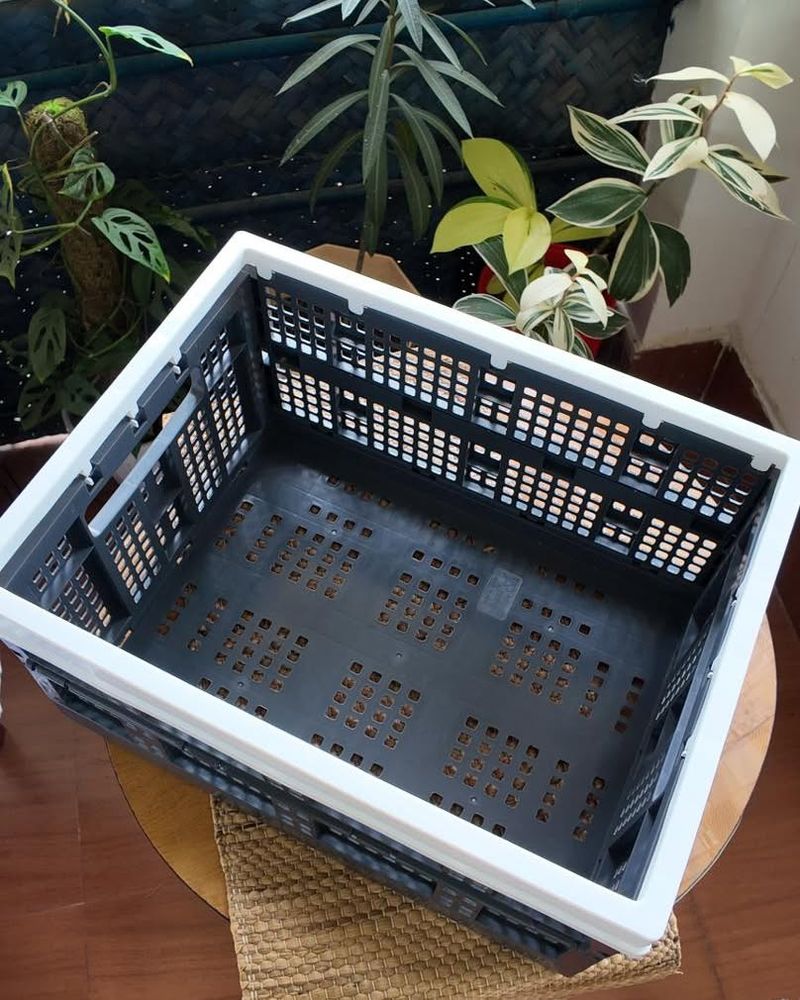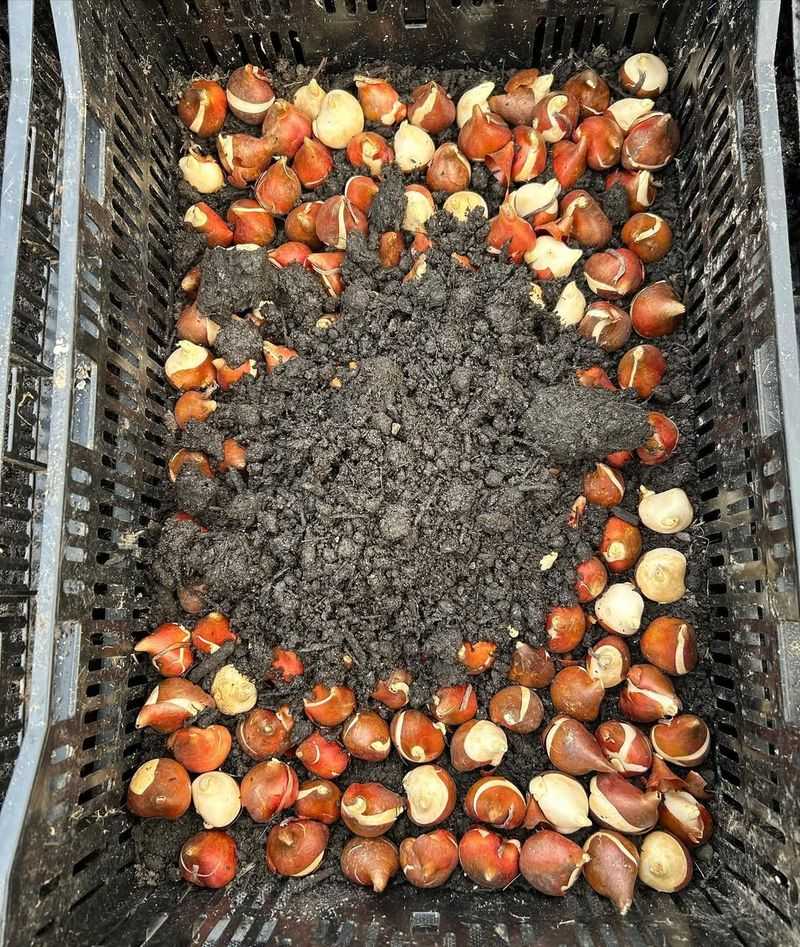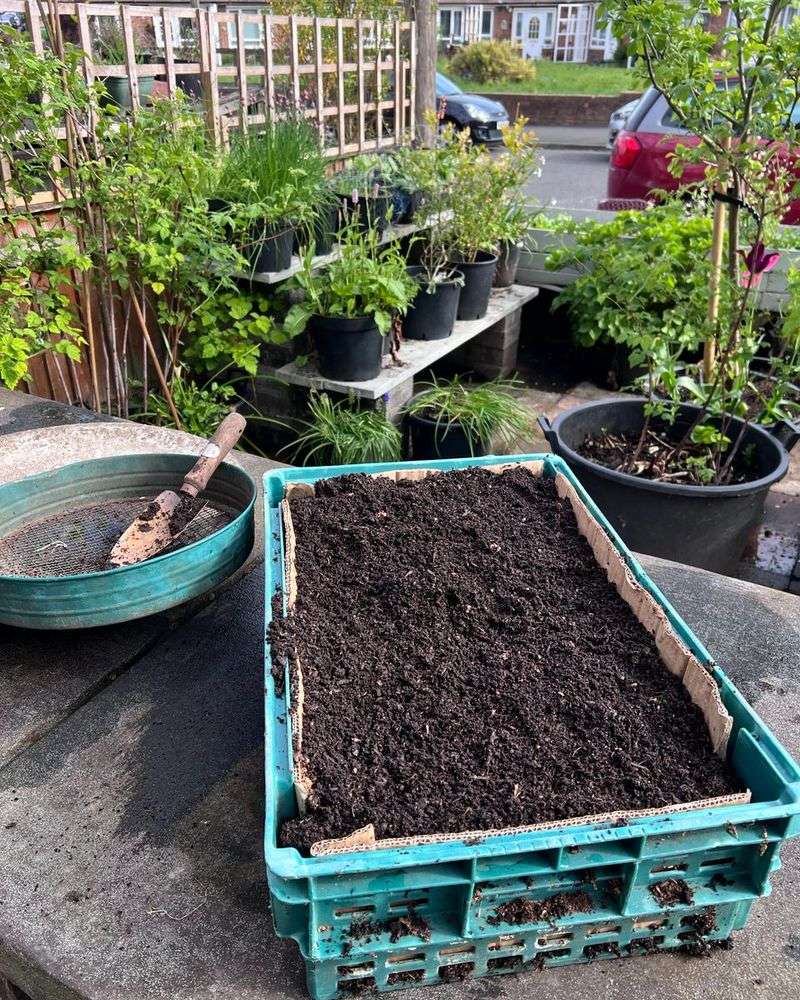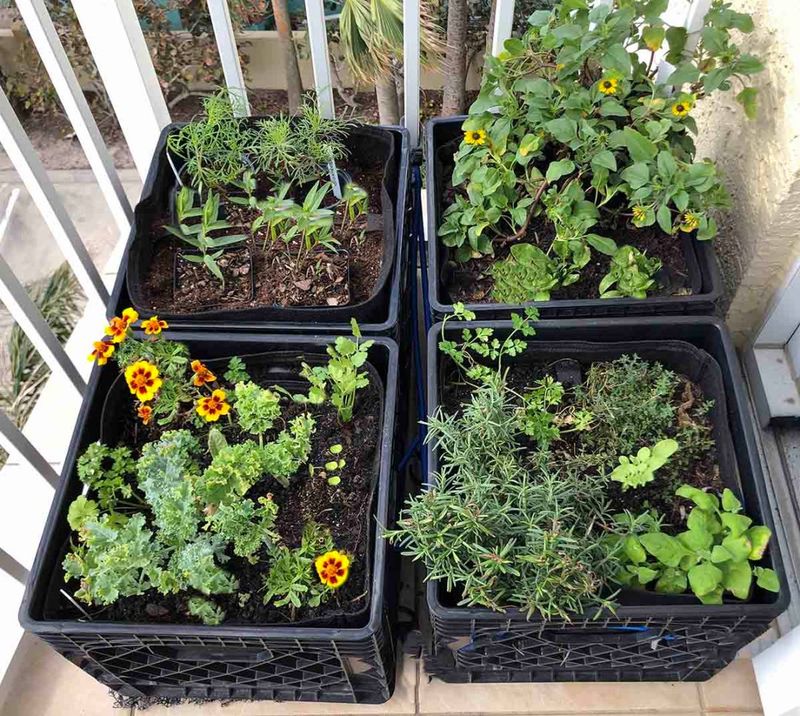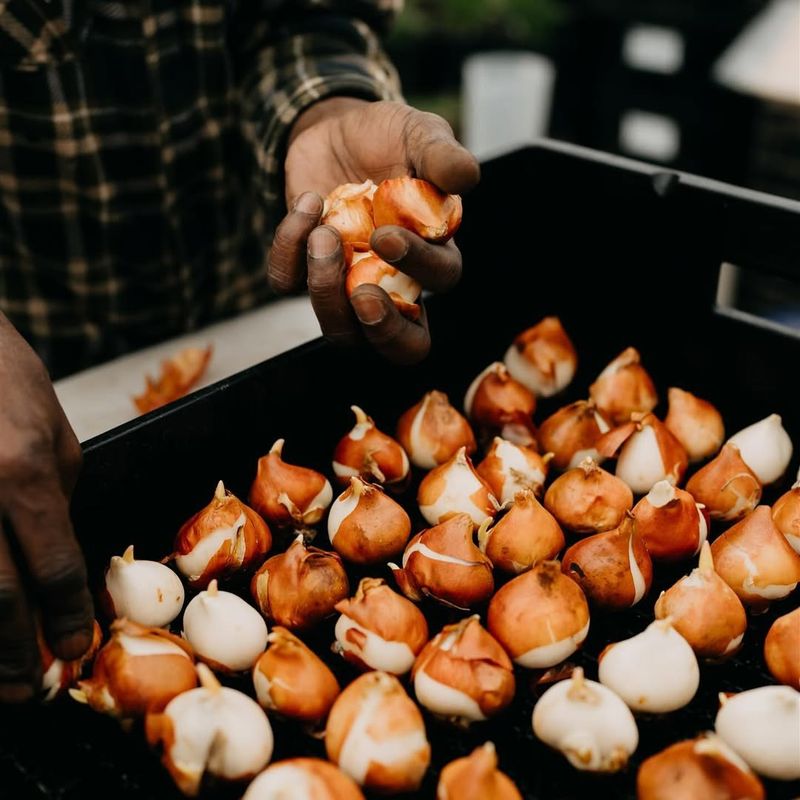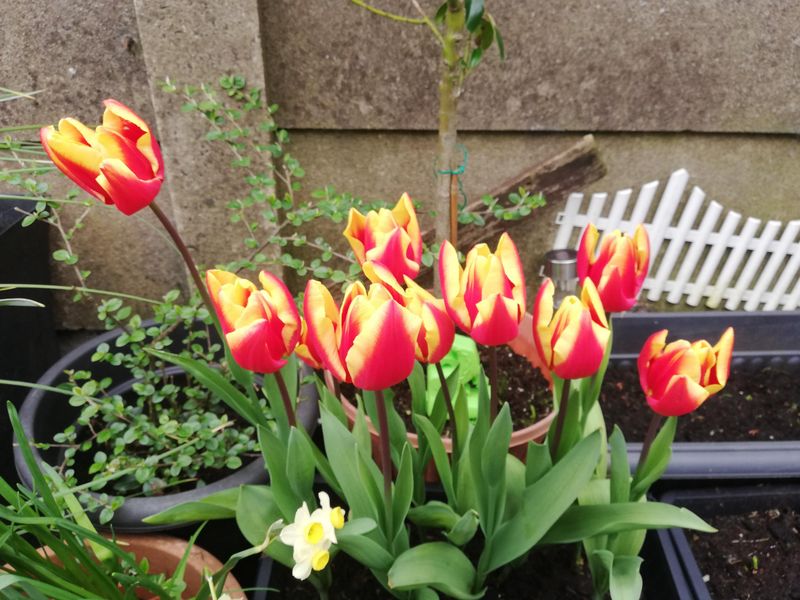Michigan gardeners have discovered something surprising sitting in their garages and basements: old plastic milk crates make perfect homes for spring bulbs!
Instead of buying fancy planters, these clever folks are recycling sturdy crates to create stunning displays of tulips, daffodils, and other early bloomers.
The magic begins with the crate’s open structure. Those built-in holes that once helped carry heavy bottles now offer natural drainage, something bulbs absolutely rely on.
Excess water slips out with ease, keeping the soil from turning soggy during early thaw periods.
Gardeners often mention that this single feature helps prevent rot and encourages stronger root growth. The lightweight frame adds another major perk: portability.
What started as an experiment now feels like a small gardening revolution, proving that beauty sometimes hides in the most ordinary corners of a home.
Line Your Crate With Landscape Fabric
Before you plant a single bulb, grab some landscape fabric from your local hardware store.
This breathable material keeps soil inside while allowing water to drain freely through those handy crate holes.
Cut a piece large enough to cover the bottom and sides with a few inches of overlap.
Drape the fabric into your crate and press it firmly into the corners.
You can secure it temporarily with clothespins or binder clips along the top edges.
Once you add soil, the weight will hold everything in place naturally.
The fabric prevents soil from spilling out when you move your crate around, which you’ll probably do often in Michigan’s changeable spring climate.
Without this liner, you’d lose precious potting mix every time you relocated your bulbs.
Plus, the fabric stops weeds from sneaking up through the bottom while still letting excess moisture escape, preventing root rot that could ruin your beautiful blooms before they even start.
Choose The Right Bulb Varieties For Crate Growing
Not all bulbs thrive equally well in the limited space a milk crate provides.
Compact varieties work best because they don’t need deep root systems to produce gorgeous flowers.
Crocuses, grape hyacinths, and smaller daffodil types are absolute champions in these containers.
Standard tulips and mid-sized daffodils also perform beautifully when given proper care. Avoid giant varieties or tall specialty bulbs that need extensive root depth.
Those types belong in the ground where they can spread out comfortably.
Consider mixing early, mid, and late-blooming varieties in the same crate for extended color throughout Michigan’s spring season.
This strategy means you’ll enjoy flowers from March through May instead of just one brief week.
Remember that crate gardening lets you experiment without permanent commitment, so try different combinations each year until you discover your personal favorites that handle Michigan’s weather patterns best.
Master The Layering Technique For Maximum Blooms
Professional gardeners call it lasagna planting, and it transforms ordinary milk crates into explosion of color.
Plant your largest bulbs at the bottom layer, about six inches deep in the crate.
Cover them with soil, then add a second layer of medium-sized bulbs at four inches deep.
Finish with tiny bulbs like crocuses just two inches below the surface. Each layer blooms at different times, creating a spectacular show that lasts for weeks.
The bulbs don’t interfere with each other because they grow at different depths.
Offset each layer slightly so the upper bulbs aren’t directly above the lower ones, giving everyone room to stretch.
This technique maximizes your limited crate space brilliantly.
A single milk crate can hold twenty or more bulbs using this method, compared to maybe eight if you plant them all at the same level.
Michigan gardeners love this approach because it delivers serious flower power from such a small footprint.
Protect Your Bulbs From Michigan’s Freeze-Thaw Cycles
Michigan weather plays cruel tricks on spring bulbs, swinging from freezing to mild and back again.
Your milk crates need extra protection that in-ground bulbs naturally receive from surrounding earth.
Move your crates against a south-facing wall or into an unheated garage during the coldest months.
Cover the soil surface with three inches of straw or shredded leaves to insulate against temperature swings.
This mulch layer moderates soil temperature, preventing premature sprouting during those deceptive warm February days.
Bulbs that start growing too early often get damaged when freezing temperatures return.
Check your crates monthly throughout winter to ensure the soil stays slightly moist but never soggy.
The crate’s drainage helps prevent waterlogging, but you still need to monitor moisture levels.
When consistent spring temperatures arrive, usually late March in southern Michigan, remove the mulch gradually over several days.
This gentle transition helps your bulbs adjust without shocking their systems, leading to stronger stems and bigger blooms.
Position Your Crates For Optimal Sun Exposure
Early spring bulbs crave sunshine but can’t handle Michigan’s intense summer heat that comes later.
Place your crates where they’ll receive full morning sun and partial afternoon shade.
East-facing locations work perfectly for this light pattern.
The mobility of milk crates gives you a huge advantage over traditional gardens.
As the season progresses and temperatures climb, simply move your crates to shadier spots.
This flexibility extends your bloom time because flowers last longer when protected from harsh afternoon sun.
Watch how sunlight moves across your yard throughout the day before committing to a spot.
That sunny morning location might become a shadowy corner by noon, which won’t provide enough light for robust blooms.
Most spring bulbs need at least six hours of direct sunlight daily to perform their best.
Stack crates on sturdy tables or benches to elevate them closer to available light if your yard has limited sunny areas – just ensure your platform can handle the weight of soil-filled crates safely.
Water Correctly Without Drowning Your Bulbs
Bulbs hate sitting in waterlogged soil more than almost anything else.
Thankfully, milk crates offer excellent drainage through their perforated design.
Water thoroughly when the top inch of soil feels dry to your touch, then let gravity do the rest.
During Michigan’s rainy spring weeks, you might not need to water at all.
Check your crates regularly because rain doesn’t always penetrate dense foliage or reach containers tucked under eaves.
When you do water, use a gentle spray rather than a harsh stream that could expose bulbs or wash away soil.
Early spring requires less frequent watering than you might expect since cooler temperatures mean slower evaporation.
As flowers emerge and temperatures rise, you’ll need to water more often, possibly every other day during warm spells.
Always water in the morning so foliage dries before evening, reducing disease risk.
The crate’s drainage prevents the root rot problems common in solid containers, but overwatering can still cause issues, so practice restraint rather than drowning your plants with misguided enthusiasm.
Feed Your Bulbs For Next Year’s Performance
Most gardeners forget that bulbs need nutrition to build strength for next year’s show. When flowers first appear, sprinkle a slow-release bulb fertilizer across the soil surface.
This feeding helps bulbs store energy for future blooms rather than exhausting themselves completely.
After flowers fade, resist the urge to cut back the foliage immediately.
Those green leaves manufacture food through photosynthesis, replenishing the bulb’s energy reserves.
Let foliage yellow naturally, which takes about six weeks, while continuing to water and fertilize lightly.
Michigan’s relatively cool springs actually help this process since bulbs aren’t stressed by extreme heat.
Once leaves turn completely brown, you can remove them or simply lift the entire crate and store it in a cool, dry location until fall.
Some gardeners replant the same bulbs in fresh soil for another year of blooms, though performance may diminish.
The beauty of crate gardening means you can easily experiment with reusing bulbs versus starting fresh annually without major investment or effort.


